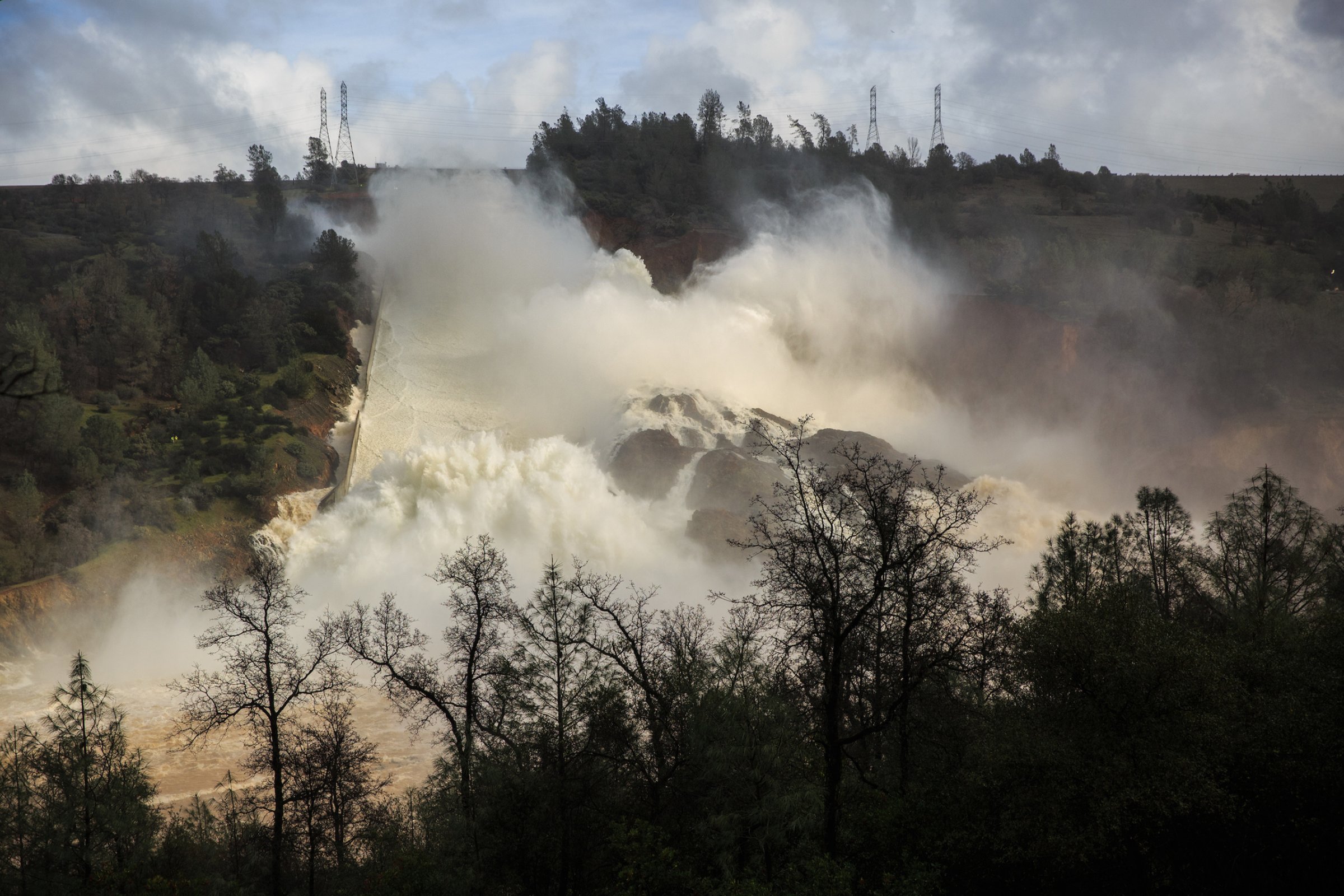
With three storms making their way across California, the state’s Department of Water Resources is racing against time, draining more than 100,000 cubic feet of water every second from Lake Oroville.
The reason why, at least for Sacramento-based photographer Max Whittaker, started in the early hours of Feb. 7. “The San Francisco Chronicle called and asked if I wanted to go up to Oroville to do a story on how California’s reservoirs are full,” he says. “I set out figuring that it would be a straightforward story.” When he arrived, however, authorities had blocked the road leading to the spillway. When he tried to go to the top of the dam itself to look for other angles, they blocked his way again. Perplexed — who would object to him taking a picture of the water? — he then overheard officials at a roadblock talking about “the incident.”
After a back and forth with his editor and the authorities on the scene, a representative from the California Department of Water Resources let him follow along to see what was happening. “We went close to the spillway and there was this huge hole in it,” he recalls.
As he photographed the damage, the story was changing.
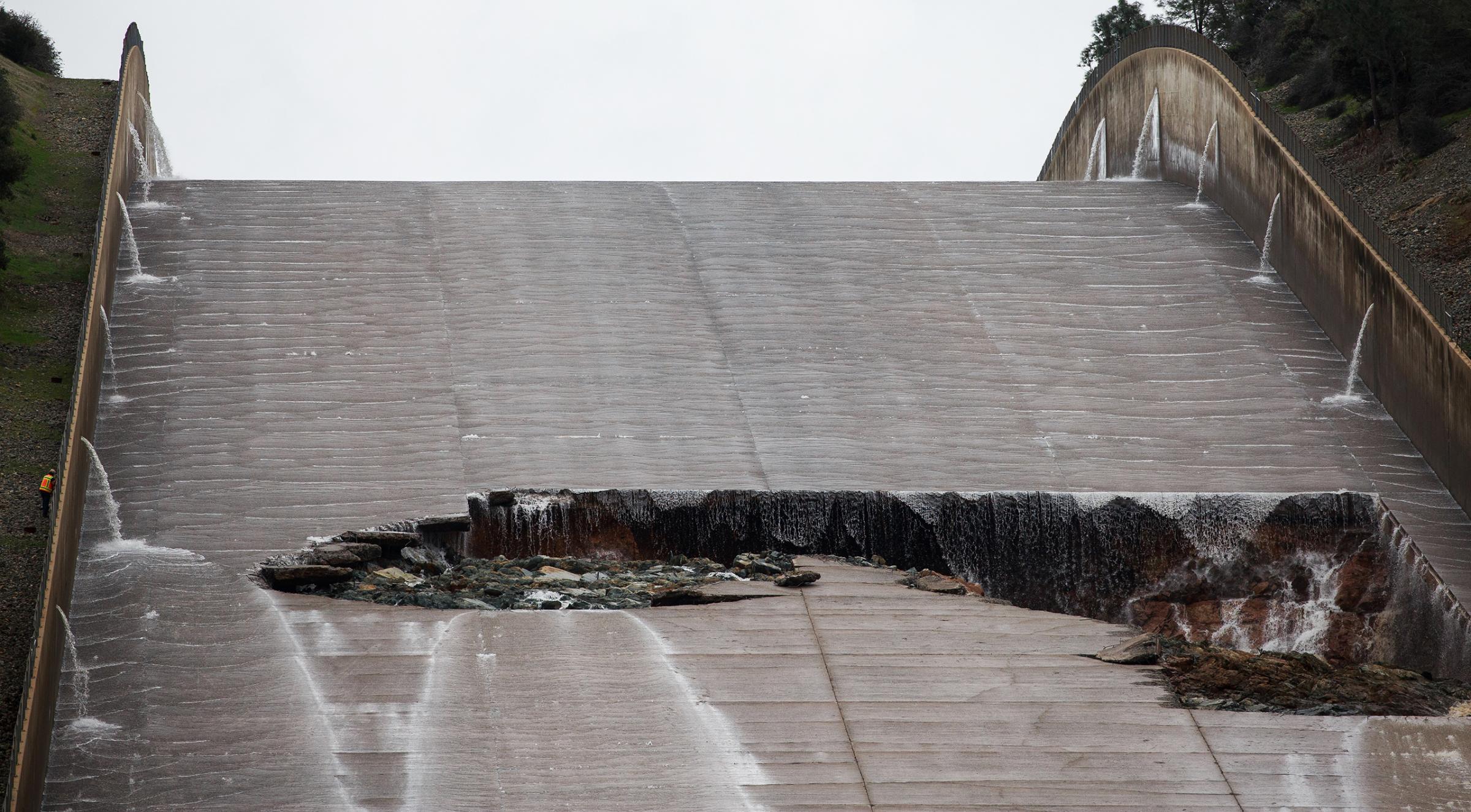
This was at the end of a very warm and wet storm that had hit northern California. “It was raining up to 9,000 feet [in altitude] when typically, in the winter, it would snow from 2,000 to 5,000 feet,” says Whittaker. “All this water was running down quickly to the lake, even melting existing snow so there was tremendous inflow.”
Authorities realized they wouldn’t be able to drain the water quickly enough to solve the problem, and an evacuation order was issued for 200,000 people living downstream from the Oroville Dam, including some of Whittaker’s friends and relatives.
“I saw people at the evacuation centers who literally brought nothing with them,” he says. “It was somewhat terrifying for people because the traffic jams were so massive and in areas that could be inundated if the dam had collapsed.” While people were orderly, there was still a stressful vibe hanging over everyone, says Whittaker. “But, as time went on [and the evacuation order was lifted], it’s been interesting to see the variety of emotions people have about it. Some felt they got evacuated for no reason, when others refused to return to their homes because the danger has not subsided.”
Now, everyone is watching the weather. The Department of Water Resources says the situation is under control if the forecast stands, Whittaker reports. But when it comes to something so dependent on the weather, the future is hard to predict.
“Another storm just started,” he says. “It’s raining steadily today.”
Max Whittaker is a photographer based in Sacramento. He’s represented by the Prime collective.
Kim Bubello, who edited this photo essay, is a freelance photo editor at TIME.
Olivier Laurent is the editor of TIME LightBox. Follow him on Twitter and Instagram @olivierclaurent


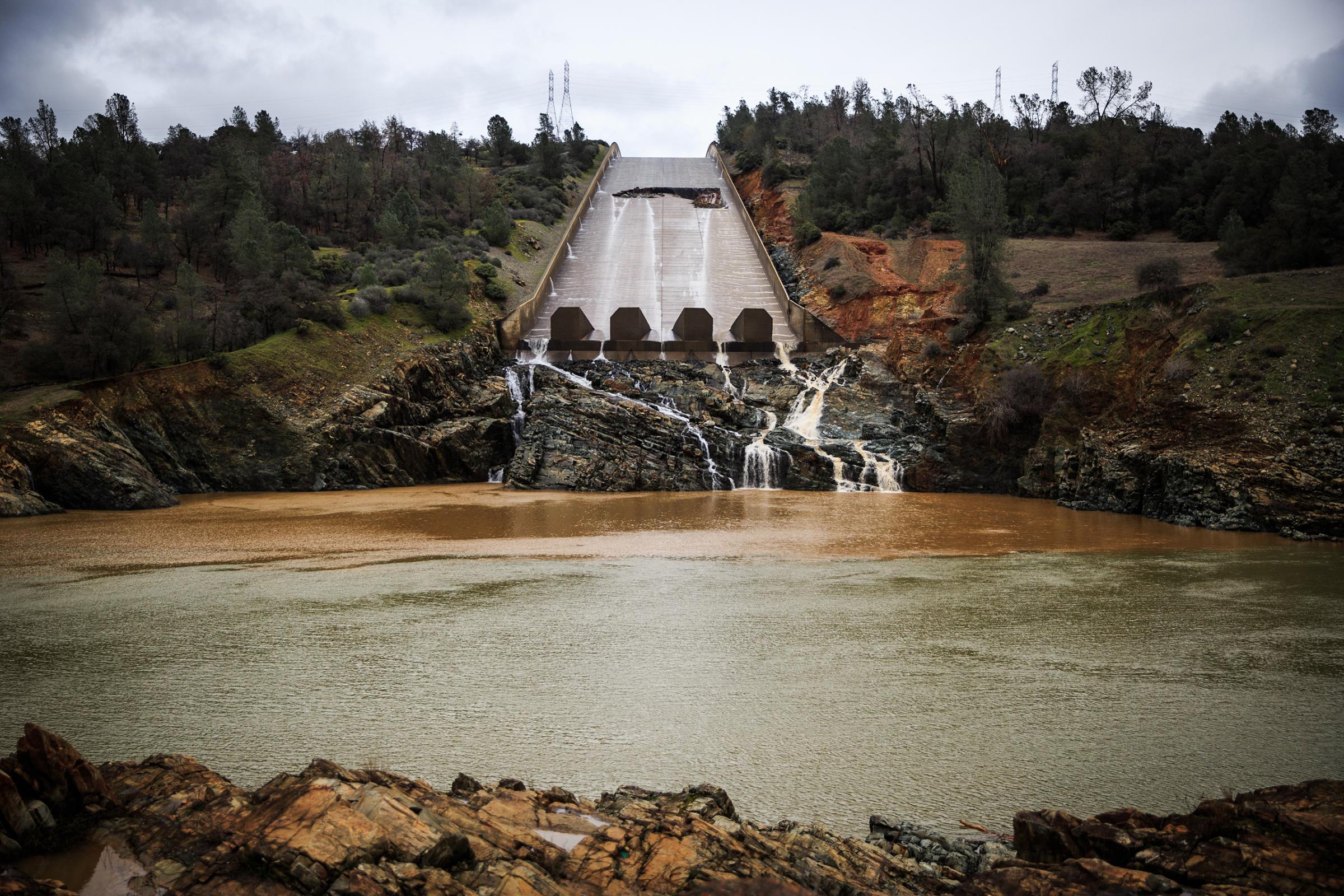
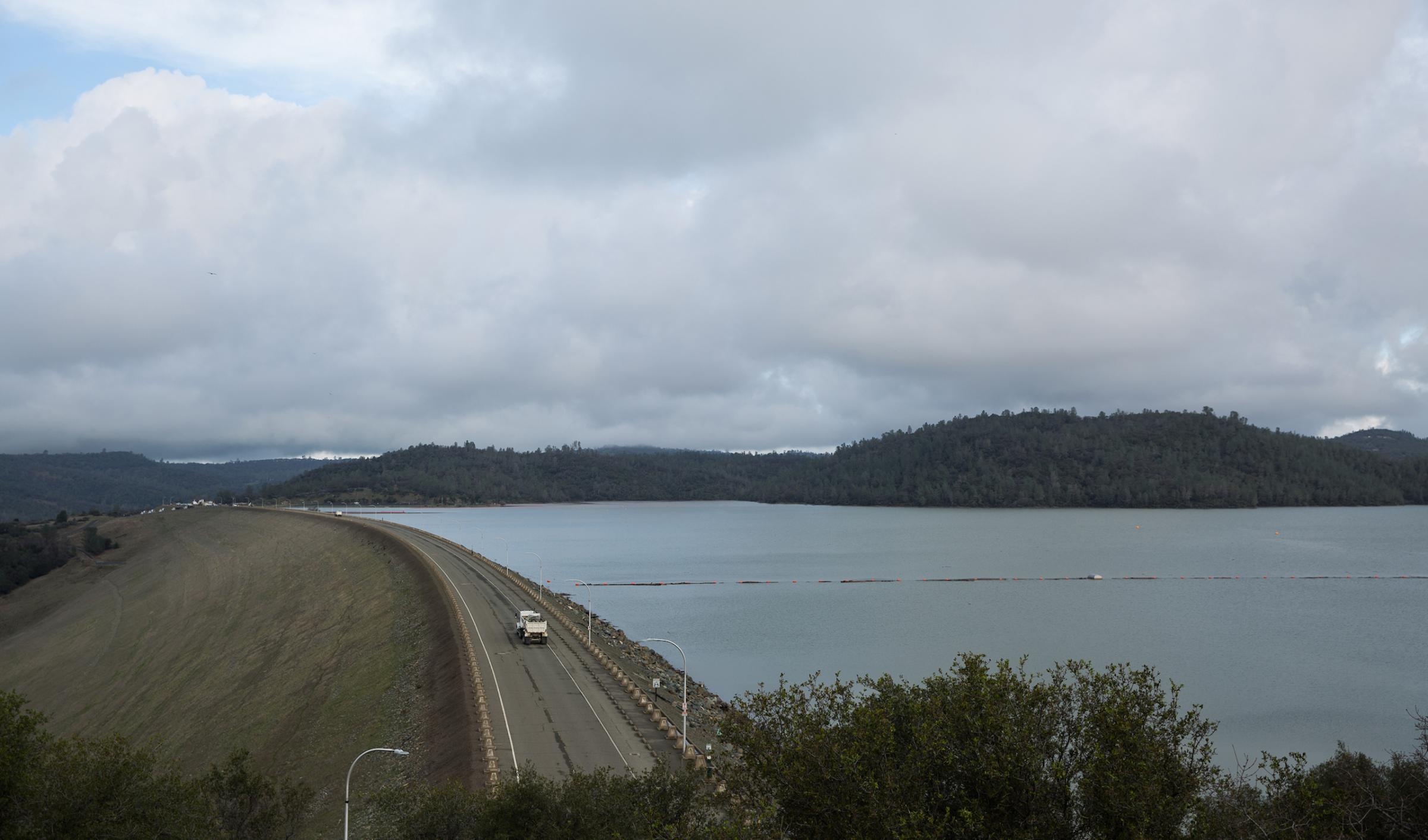


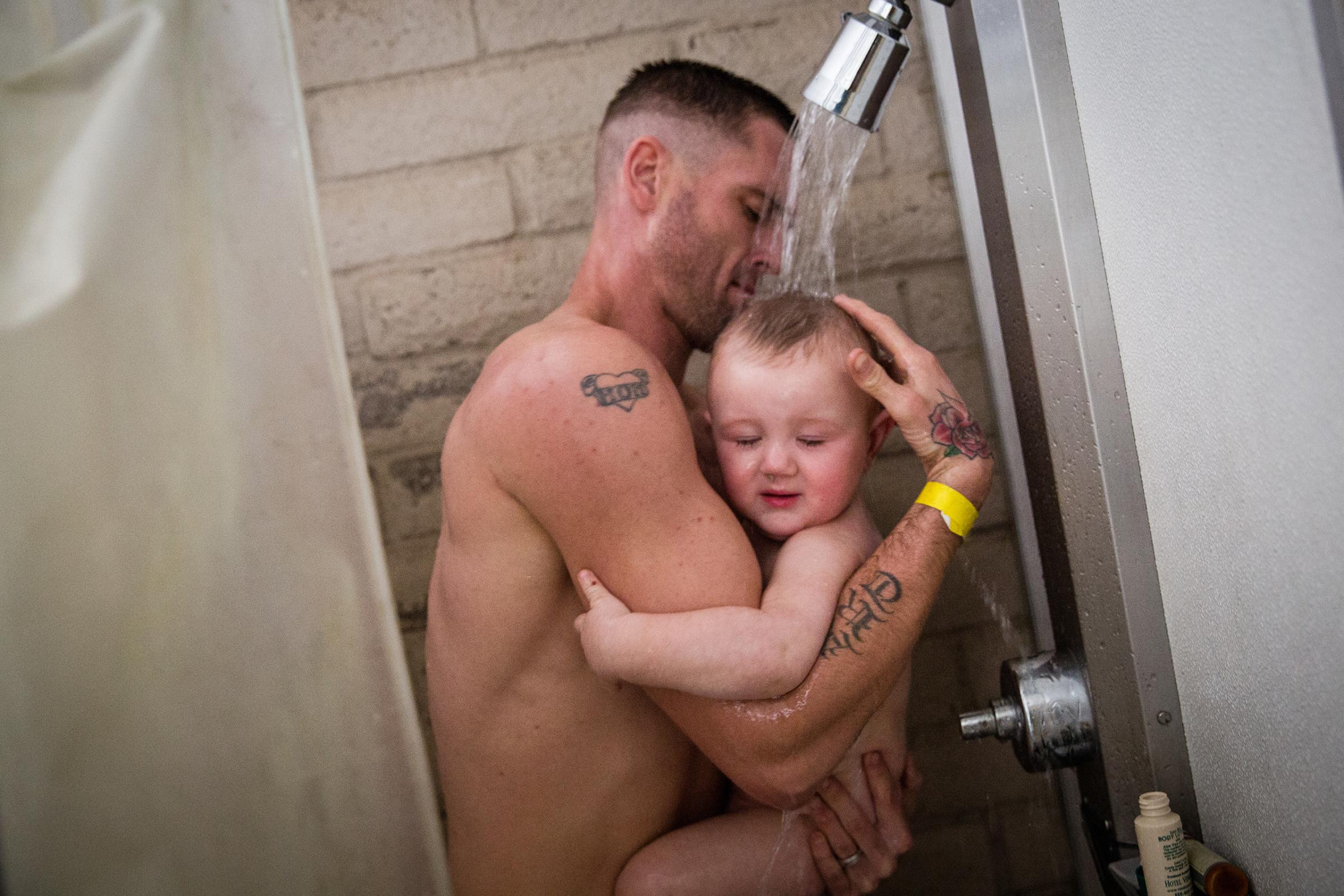
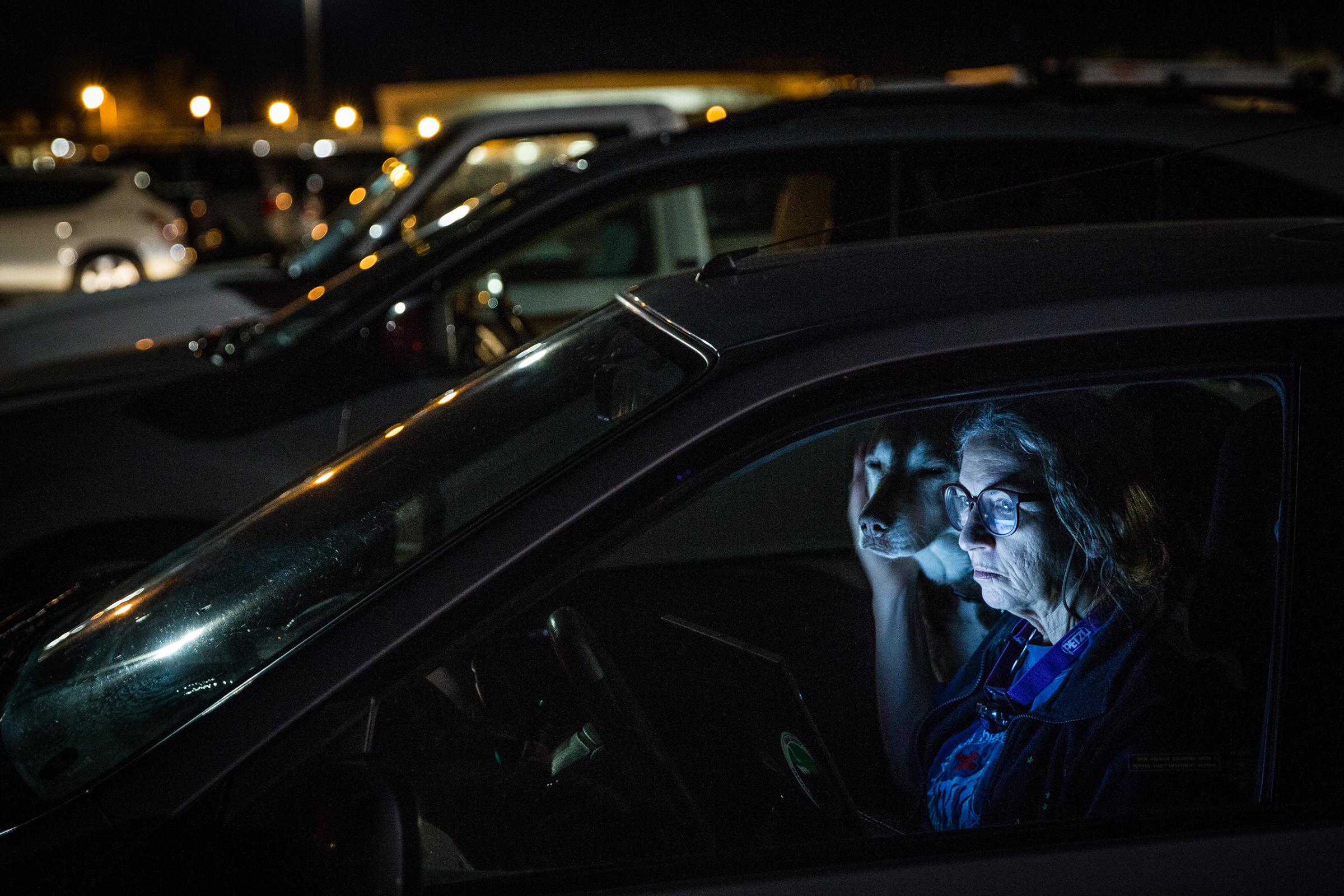

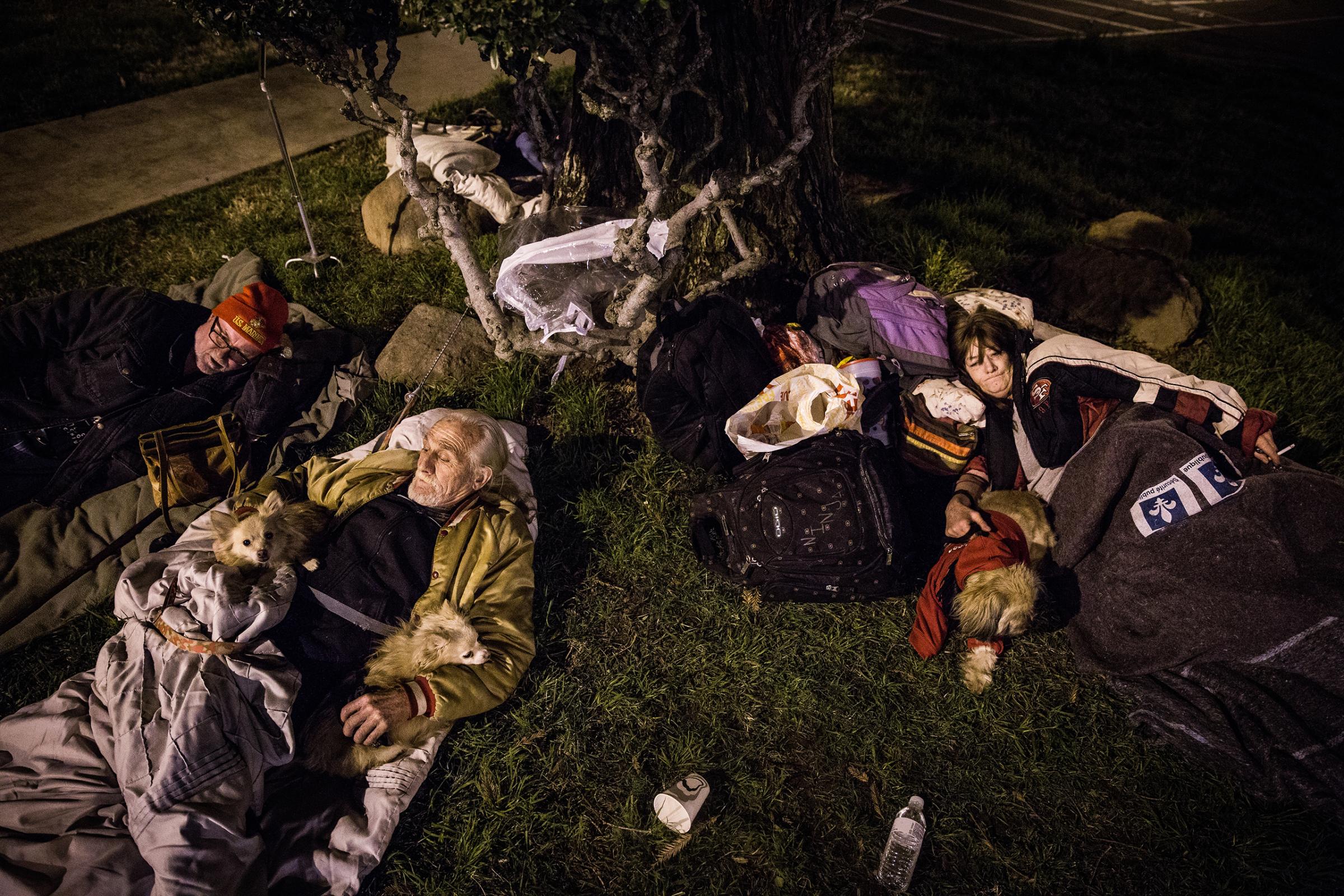

More Must-Reads from TIME
- Cybersecurity Experts Are Sounding the Alarm on DOGE
- Meet the 2025 Women of the Year
- The Harsh Truth About Disability Inclusion
- Why Do More Young Adults Have Cancer?
- Colman Domingo Leads With Radical Love
- How to Get Better at Doing Things Alone
- Michelle Zauner Stares Down the Darkness
Contact us at letters@time.com